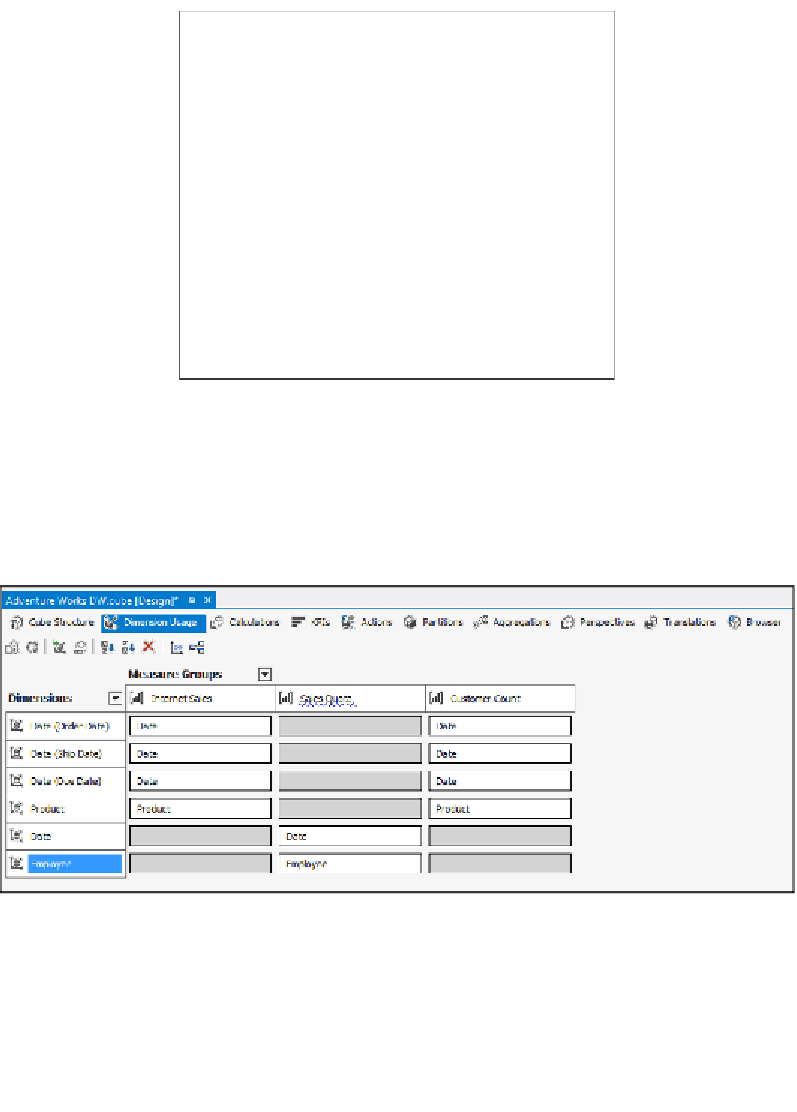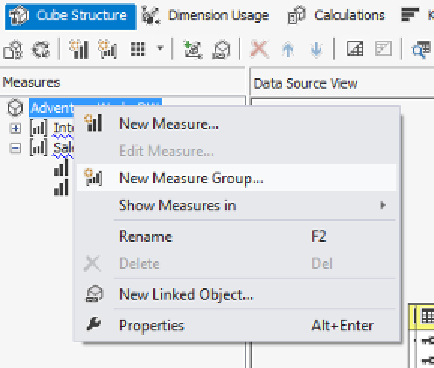Database Reference
In-Depth Information
Once you've created a new measure group, SSDT will try to set up relationships
between it and any existing dimensions in your cube based on the relationships
you've defined in your DSV. Since doing this manually can be time-consuming,
this is another great reason for defining relationships in the DSV. You can check the
relationships that have been created on the
Dimension Usage
tab of the Cube Editor,
as shown in the following screenshot:
This is a good point to stop and think about a very important question in Analysis
Services cube design: is it better to create one cube with multiple measure groups
to hold all of your data, or create multiple cubes, each with just one or two measure
groups? As always, it depends. In general, it's better to go with the "one big cube"
approach until you find you need to split your data into multiple cubes, but there
are many factors to consider here.


Search WWH ::

Custom Search